
International Journal of Nanoscience
Scope & Guideline
Advancing Knowledge in Nano-Applications and Beyond
Introduction
Aims and Scopes
- Nanomaterials Synthesis and Characterization:
The journal emphasizes the development and characterization of various nanomaterials, including metal nanoparticles, carbon-based nanomaterials, and composite structures, utilizing diverse synthesis techniques such as green synthesis, laser ablation, and chemical methods. - Nanotechnology in Biomedical Applications:
A core area of focus is the application of nanomaterials in biomedicine, including drug delivery systems, biosensors, and antimicrobial agents, showcasing their potential to revolutionize medical treatments and diagnostics. - Nanomaterials for Energy Applications:
Research on nanomaterials for energy applications, particularly in solar cells, photodetectors, and photocatalysis, is prominently featured, demonstrating the role of nanotechnology in enhancing energy efficiency and sustainability. - Optical and Electronic Properties of Nanomaterials:
The journal explores the optical and electronic properties of nanostructures, investigating their behavior in various applications such as sensors, photodetectors, and electronic devices, which are critical for advancing nanoelectronics. - Environmental and Sustainable Applications of Nanotechnology:
Research on the environmental impact, degradation, and remediation capabilities of nanomaterials is increasingly emphasized, promoting sustainable practices in the use of nanotechnology.
Trending and Emerging
- Green and Eco-Friendly Nanomaterial Synthesis:
There is a growing trend towards the development of environmentally friendly synthesis methods for nanomaterials, utilizing natural extracts and sustainable processes, which aligns with global sustainability goals. - Integration of Nanotechnology in Healthcare:
Research focusing on the intersection of nanotechnology and healthcare is on the rise, particularly in drug delivery systems, nanomedicine, and biosensors, showcasing the potential of nanotechnology to address pressing health challenges. - Nanomaterials in Energy Harvesting and Storage:
A significant increase in research on nanomaterials for energy harvesting and storage applications, such as solar cells, batteries, and supercapacitors, indicates a strong emphasis on renewable energy solutions and sustainability. - Advanced Characterization Techniques for Nanomaterials:
The adoption of advanced characterization techniques, including spectroscopy and microscopy, is trending, as researchers seek to gain deeper insights into the properties and behaviors of nanomaterials at the atomic and molecular levels. - Multifunctional Nanocomposites for Diverse Applications:
The development of multifunctional nanocomposites that combine properties for various applications, including sensors, catalysts, and environmental remediation, is an emerging area of research, reflecting the versatility of nanotechnology.
Declining or Waning
- Traditional Chemical Synthesis Methods:
There is a noticeable reduction in studies focusing on conventional chemical synthesis methods for nanomaterials, as researchers increasingly favor greener and more sustainable approaches, such as biosynthesis and eco-friendly techniques. - Basic Theoretical Studies without Experimental Validation:
Research that emphasizes theoretical models or simulations without accompanying experimental validation is becoming less common. The journal now prioritizes studies that combine theoretical insights with practical applications and experimental results. - Applications of Nanomaterials in Non-Scientific Fields:
Papers exploring the applications of nanomaterials in areas outside of science and technology, such as art or non-technical fields, have decreased in frequency, indicating a return to a more focused scientific approach.
Similar Journals
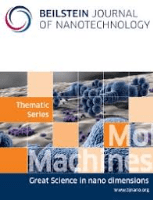
Beilstein Journal of Nanotechnology
Innovating at the intersection of science and technology.The Beilstein Journal of Nanotechnology is a prominent open access journal published by the Beilstein Institute that has been at the forefront of nanotechnology research since its inception in 2010. With a focus on cutting-edge developments in areas such as Electrical and Electronic Engineering, Materials Science, and Physics and Astronomy, this journal is ranked in the Q2 category across multiple scientific disciplines, reflecting its significant impact within the research community. The journal is accessible to a global audience and aims to foster innovation and application of nanotechnology across various fields. Featuring a rich convergence of interdisciplinary studies, the Beilstein Journal of Nanotechnology offers a platform for researchers to share their findings, thus advancing the frontiers of knowledge in this dynamic field. With publishers based in Frankfurt am Main, Germany, it continues to contribute to the scientific dialogue on nanoscience and its practical applications, making it an essential resource for academics, professionals, and students eager to stay at the cutting edge of technology.

Nanoscale Research Letters
Empowering researchers to share groundbreaking findings.Nanoscale Research Letters, published by SPRINGER, is a leading open-access journal dedicated to the rapid dissemination of innovative research in the field of nanoscience and nanotechnology. Established in 2006, this journal provides researchers and professionals with a platform to share their groundbreaking findings across a broad spectrum of applications, including condensed matter physics and materials science. With an impressive Q1 ranking in both Condensed Matter Physics and Materials Science categories as of 2023, it asserts its position as a top-tier publication within the scientific community, bolstered by a 96th percentile rank in the Scopus database. Nanoscale Research Letters not only emphasizes the importance of nanotechnology research but also ensures that its findings are widely accessible, adhering to its open-access mandate. Scholars and students alike are encouraged to contribute to and engage with this dynamic resource, fostering collaboration and innovation in the ever-evolving world of nanoscience.
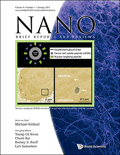
NANO
Advancing Knowledge at the NanoscaleNANO is an esteemed academic journal published by World Scientific Publishing Co. Pte Ltd, focusing on the frontier of nanoscience and nanotechnology. With ISSN 1793-2920 and E-ISSN 1793-7094, this journal has been a pivotal platform for disseminating innovative research from 2008 to 2024. Located in Singapore, NANO has established itself within the academic community, currently holding notable rankings in the Q3 Category for both Condensed Matter Physics and Materials Science, as well as a Q4 Category status in Nanoscience and Nanotechnology. Though it operates under a non-open access model, its contributions are invaluable for researchers, professionals, and students seeking to stay abreast of the latest advancements and interdisciplinary approaches within the nanoscale domain. By providing in-depth articles, reviews, and insights, NANO plays a significant role in advancing our understanding of materials at the nanoscale, thereby fostering innovation and collaboration across related fields.

Microfluidics and Nanofluidics
Exploring Innovative Pathways in Fluid DynamicsMicrofluidics and Nanofluidics is a distinguished academic journal published by Springer Heidelberg, focusing on the rapidly evolving fields of micro and nanotechnology. With a commitment to disseminating cutting-edge research, this peer-reviewed journal aims to bridge the gap between fundamental science and practical application within Condensed Matter Physics, Materials Chemistry, and Nanoscience and Nanotechnology. It holds an influential position in its field, reflected by its Category Quartiles (Q3) and notable Scopus Rankings, including a ranking of #145 in Condensed Matter Physics. Researchers, professionals, and students will find this journal to be an invaluable resource for accessing pioneering studies, methodologies, and innovative technologies essential for advancing knowledge and applications in micro and nanofluidics. With an extensive history from 2004 to 2024, Microfluidics and Nanofluidics continues to foster discussion and collaboration within the scientific community, solidifying its role as a leading platform for scholarly communication in this dynamic discipline.
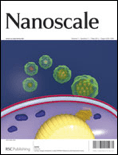
Nanoscale
Unveiling the Potential of Nanotechnology.Nanoscale is a premier academic journal published by the Royal Society of Chemistry, dedicated to advancing the field of nanoscience and nanotechnology. With both its ISSN (2040-3364) and E-ISSN (2040-3372) ensuring wide accessibility, the journal is renowned for its high-impact research contributions, reflected in its impressive 2023 Impact Factor and prestigious Q1 ranking in both Materials Science (Miscellaneous) and Nanoscience and Nanotechnology categories. Since its inception in 2009, Nanoscale has fostered a collaborative platform where leading researchers from around the globe share their innovative findings across a multitude of topics spanning from material synthesis to applications in nanotechnology. The journal not only serves as a valuable resource for professionals, researchers, and students but also actively engages the academic community in discussing emerging trends, thus shaping the future of nanoscience. Situated in the heart of the UK at Thomas Graham House, Science Park, Milton Rd, Cambridge CB4 0WF, Nanoscale remains a key publication for those looking to keep abreast of the latest breakthroughs in an ever-evolving field.
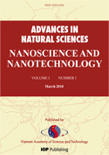
Advances in Natural Sciences-Nanoscience and Nanotechnology
Unveiling the Future of Nanotechnology ResearchAdvances in Natural Sciences-Nanoscience and Nanotechnology is a premier academic journal published by IOP Publishing Ltd, dedicated to the dynamic and rapidly evolving field of nanoscience and nanotechnology. With an ISSN of 2043-6254 and E-ISSN 2043-6262, this journal encompasses a diverse spectrum of research encompassing both theoretical frameworks and applied technologies, bridging the gap between engineering, industrial practices, and materials science. Holding a reputable position within the Q3 quartile for Electrical and Electronic Engineering, Q2 in Industrial and Manufacturing Engineering, and Q3 in Materials Science, it ranks significantly due to its robust review process and quality of articles. With a convergence span from 2010 to 2024, the journal aims to foster an open dialogue among researchers and professionals, providing essential insights into cutting-edge advancements and interdisciplinary applications in nanotechnology. The open access policy enhances visibility and accessibility, ensuring that every article extends its reach beyond the confines of traditional scholarly communication. Situated in the United Kingdom, this journal not only bolsters the global discourse on nanoscience but also serves as a critical resource for those at the forefront of research and innovation.
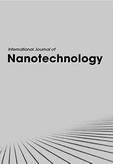
International Journal of Nanotechnology
Connecting Researchers to the Future of NanotechnologyInternational Journal of Nanotechnology, published by INDERSCIENCE ENTERPRISES LTD, is a prominent academic platform dedicated to advancing research in the rapidly evolving field of nanotechnology. With an ISSN of 1475-7435 and an E-ISSN of 1741-8151, this journal has been contributing valuable insights and innovative findings since its inception in 2004. Although currently not an open-access publication, it serves as an essential resource for researchers, professionals, and students alike, encompassing critical areas such as bioengineering, condensed matter physics, and materials science. The journal is indexed in Scopus, highlighting its academic rigor, albeit ranking in the lower quartiles across several categories. As it progresses towards its 2024 milestone, the International Journal of Nanotechnology continues to play a crucial role in fostering collaborative scientific discourse and pushing the boundaries of knowledge in nanoscience. With a distinguished reputation in the United Kingdom and beyond, it is a vital tool for anyone looking to stay at the forefront of nanotechnology advancements.

ACS Nanoscience Au
Connecting Ideas in Nanoscience and MaterialsACS Nanoscience Au, published by the American Chemical Society, is a leading open-access journal dedicated to the rapidly evolving field of nanoscience. Since its inception in 2021, this journal has established itself within the top quartiles of academic publishing, ranking Q1 in both Chemistry and Materials Science for 2023. With a commitment to disseminating high-quality research, it provides a platform for innovative findings in nanomaterials, nanotechnology applications, and associated interdisciplinary studies. The journal is based in the United States and embraces an open-access model, ensuring that research is freely accessible to a global audience. This initiative not only enhances the visibility of authors' work but also facilitates collaboration across scientific domains. As a vital resource for researchers, professionals, and students alike, ACS Nanoscience Au plays a crucial role in advancing knowledge in the nanoscience community.
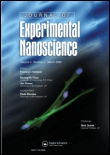
Journal of Experimental Nanoscience
Advancing the Frontiers of NanoscienceThe Journal of Experimental Nanoscience, published by Taylor & Francis Ltd, is an esteemed open-access journal dedicated to advancing the field of nanoscience and its applications across various disciplines. Since its establishment, the journal has aimed to provide a comprehensive platform for researchers and professionals to disseminate innovative findings in nanotechnology, bioengineering, and materials science. With an ISSN of 1745-8080 and E-ISSN of 1745-8099, this journal has been pivotal in promoting high-quality research in its converged years from 2006 to 2024. Recognized for its contributions, it currently holds a Q3 ranking in core categories such as Bioengineering, Biomedical Engineering, Materials Science, and Nanoscience and Nanotechnology. Although its H-index is not specified, its Scopus ranks reflect its growing influence, with notable percentiles in various engineering fields. By offering open access since 2016, the Journal of Experimental Nanoscience enhances the accessibility of vital research to a global audience. Researchers, professionals, and students will find this journal an invaluable resource for staying abreast of the latest advancements and breakthroughs in nanoscience.

Nanoscience and Technology-An International Journal
Pioneering Research at the NanoscaleNanoscience and Technology-An International Journal, published by BEGELL HOUSE INC, is a leading platform dedicated to the rapidly evolving fields of nanoscience and nanotechnology. With its ISSN 2572-4258 and E-ISSN 2572-4266, the journal serves as a crucial resource for researchers, professionals, and students alike, focusing on advanced materials, condensed matter physics, and mechanics of materials. It holds a commendable position in the scholarly community, evidenced by its Q2 ranking in 2023 across multiple categories including Condensed Matter Physics and Materials Science. The journal aims to disseminate high-quality research, promote interdisciplinary collaboration, and facilitate innovation within the nano realm. With its convergence period from 2019 to 2024, it continues to attract a diverse array of studies and insightful contributions, reinforcing its importance in shaping the future of nanotechnology and its applications.